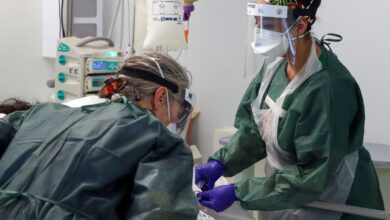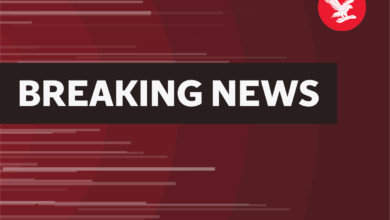NHS funding hundreds of millions short of what’s needed to improve care, experts warn

The NHS funding pledged by Jeremy Hunt is hundreds of millions of pounds short of what is required to improve care in the crisis-hit health service, experts have warned.
In his autumn statement, the chancellor promised a further £6.6bn – a figure he said NHS chief Amanda Pritchard had described as “sufficient”.
But health leaders warn the money will allow the NHS only to stave off disaster and will not be enough to meet new targets set out for the coming years.
The funding gap could be even wider as the extra money would not cover the cost of giving NHS staff pay rises linked to inflation.
Nurses are set to strike before Christmas after the government failed to award an above-inflation pay rise.
Stephen Rocks economist for the Health Foundation said the settlement, which will increase the NHS budget by 2.9 per cent, is short of the 4.2 per cent needed to reduce waiting lists, leaving it hundreds of millions of pounds short of what is needed.
The NHS faces a waiting list of 7.1 million for planned care, which is set to keep rising, while A&E and ambulance response times hit record lows in October.
In addition to reducing the planned care waiting list, the Treasury has set new priorities for the NHS including halving ambulance response times, ensuring a two-week wait for GP appointments and year-on-year improvement on A&E waiting times, in exchange for the funding settlement.
Earlier this year, NHS England estimated it would need £6-7 billion in 2023-24 to plug holes in its finances left by inflation and the costs of staff salaries.
Mr Rocks told The Independent that Health Foundation analysis showed the NHS would need a 3.6 per cent increase in its budget to maintain standards of care and 4.2 per cent to reduce its waiting list.
Thursday’s settlement for the NHS is even less than what was given in 2019 when it was awarded a 3.4 per cent annual increase.
He added: “I think there are an awful lot of new pressures, activity and demand in some areas are certainly going up, while some Covid-19 costs are proving persistent. The NHS has been given very high-efficiency targets, which are higher than it managed to meet in the past and higher than agreed in the NHS long-term plan.
“In particular, pay is an outstanding pressure. So taking all those things together, I think you would need very favourable headwinds in order to meet all the priorities within the NHS long-term plan and tackle the elective backlog.
“A degree of realism is probably needed about what can be achieved with the funding that’s been given. It’s very challenging, you need a lot of things to fall into place, very high efficiency and low-cost pressures. Again, if [staff] pay does go up significantly that would change things.”
According to Siva Anandaciva, chief analyst for the King’s Fund, the budget increase only covers non-pay inflationary cost pressures.
He said: “The £3.3 billion covers non-pay inflationary cost pressures, you’re getting money to stay still. All of the money which would have had to be diverted from long-term plan priorities to make sure you’re balancing the books, in theory, is protected but the problem is the budget also came with new expectations – ambulance performance improvement, which is going to take a herculean effort, A&E waiting times improvement and then its improving access to general practice.
“On the one hand [the Treasury has] given more money to help the NHS stand still, then you’ve given new expectations, but all the money has already been allocated just to stand still.
“It’s very hard to see how the NHS would meet those new commitments, meet its existing commitments and balance the books.”
Pay rates for NHS staff for 2023-24 and 2024-23 will not be set until next year, however this year the pay award of 4-5 per cent was not fully funded by the government.





